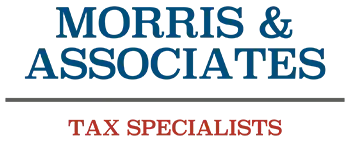The IRS has just announced some great news for individuals and businesses hit by severe storms and flooding starting from September 11, 2023. If you’re in these areas, you now have until July 31, 2024, to file various federal tax returns and make payments.
Who’s Eligible for Relief?
Counties around the country are eligible for this relief and if more counties get added to the disaster area later, they’ll qualify too. You can always check the latest list of eligible areas from around the nation on the IRS website under the “Tax Relief in Disaster Situations” section.
What’s Covered?
The IRS is extending several tax deadlines to July 31, 2024. This includes:
- Individual income tax returns and payments usually due on April 15, 2024.
- 2023 contributions to IRAs and health savings accounts.
- Quarterly estimated income tax payments for dates like September 15, 2023, January 16, 2024, April 15, 2024, and June 17, 2024.
- Quarterly payroll and excise tax returns due on October 31, 2023, January 31, 2024, and April 30, 2024.
- Calendar year partnership and S corporation returns due on March 15, 2024.
- Calendar year corporation and fiduciary returns and payments due on April 15, 2024.
- Calendar year tax-exempt organization returns due on May 15, 2024.
If you already had an extension to file your 2022 return, you’ll also have until July 31, 2024, to file it. But remember, any payments on these returns aren’t eligible for the extra time since they were due before the disaster hit.
Payroll and excise tax deposits due from September 11, 2023, to September 26, 2023, are also getting a break. If you missed these, don’t worry. As long as you made the deposits by September 26, 2023, you’re good.
How to Get This Relief
The IRS will automatically apply this relief if your address on record is in the disaster area. So, you don’t need to contact them. But if you’ve moved to the disaster area after filing your return and get a penalty notice, just call the number on the notice to have it waived.
If you’re outside the disaster area but your records are in it, or if you’re working on relief efforts, you can also get this relief. Just call the IRS at 866-562-5227. Tax preparers with clients outside the disaster area can use the bulk requests option for disaster relief.
Extensions and Additional Relief
Need more time beyond July 31, 2024? File Form 4868 for an automatic extension until October 15, 2024. Just note that payments are still due by July 31, 2024.
If you suffered uninsured or unreimbursed disaster-related losses, you can claim them on your 2023 return (filed this year) or on your 2022 return. You have up to six months after your federal income tax return is due to make this election, which means until October 15, 2024, for individual taxpayers. Remember to write the FEMA declaration number 4780-DR on any return claiming a loss.
Qualified disaster relief payments are usually excluded from your gross income. This includes amounts from a government agency for personal, family, living, or funeral expenses, and for home repair or replacement. For more details, check out IRS Publications 525 and 547.
You might also get relief if you participate in a retirement plan or IRA, such as taking a special disaster distribution without the 10% early distribution tax, or making a hardship withdrawal. Each plan has its own rules, so check with your plan administrator.
The IRS may offer more relief in the future, and this tax relief is part of a coordinated federal response to the storms’ damage. For more information on disaster recovery, visit DisasterAssistance.gov.







